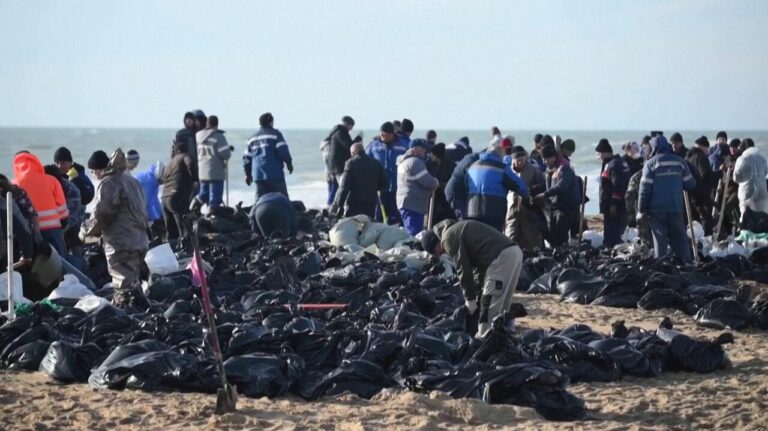After the collision of two tankers in the Kerch Strait, more than 86,000 tons of contaminated soil were preserved. It is difficult to determine the scale of the natural disaster – according to preliminary estimates, up to 200,000 tons of sand and soil could be contaminated.
Russian rescuers collected more than 86,000 people. Russia’s Emergencies Ministry reported on Saturday that on both sides of the Kerch Strait, which connects the Black Sea with the Sea of Azov, tons of oil-contaminated sand and soil. According to initial estimates, up to 200,000 tons of soil could be contaminated.
The oil spill occurred due to the accident of two tankers on December 15, 2024. Both oil tankers, Volgonieft 212 and Volgoneft 239, were built in the late 1960s and early 1970s. The tankers were sailing with cargo intended for the Russian Navy. Volgoneft 212 broke in half and sank, and Volgoneft 239 fell to the ground.
Serious consequences for the environment
More than 10,000 people have been involved in eliminating the consequences of the natural disaster. people The spill has killed dolphins, porpoises and seabirds, according to environmental groups. Toxic water has reached many Black Sea beaches, including: in the resort of Anapa. A state of emergency has been introduced in the Crimean city of Sevastopol, which joined Russia in 2014.
It is difficult to determine the extent of the damage. Russia’s transport ministry said experts estimated that around 2,400 tonnes of oil spilled into the sea, a smaller spill than initially expected. The rescue service reported in December that the tankers had about 9,200. tons of fuel oil, about 40 percent of which was spilled into the water, as it was initially estimated.
Fuel oil is fuel oil that solidifies at a temperature of 25 degrees and does not float on the surface of water, but settles at the bottom of the water or remains suspended in the water.
Main photo source: Reuters

